Tighten That Skinny Waist by Adding a Drawstring to Your Waistband
Folks that have a skinny waist, whether guys or gals, often have trouble getting pants to fit. In a casual type pant, the waistband may be a casing, with or without elastic. Sometimes you can run a drawstring through this casing to give yourself the ability to pull that waist in a bit.
Below you will find instructions for adding this drawstring
capability. The garment in the photos is a pair of swim trunks, but you
can do this alteration on several types of pants. It works well on
pajama pants or sweatpants and especially on childrens pants.
A Note About the Terms I've Used ...
There is only one term that needs to be clarified in these instructions.
In order to accomodate a skinny waist, you need to somehow alter the...
Waistband!
For our purpose here, it is the part of the trunks that is holding the
elastic. It forms a casing that attaches to the upper edge of the trunk
legs. It is often topstitched on the upper edge, the lower edge, or
both. It is the only gray part in Steps 3, 4, and 13.
Here's What You'll Need ...
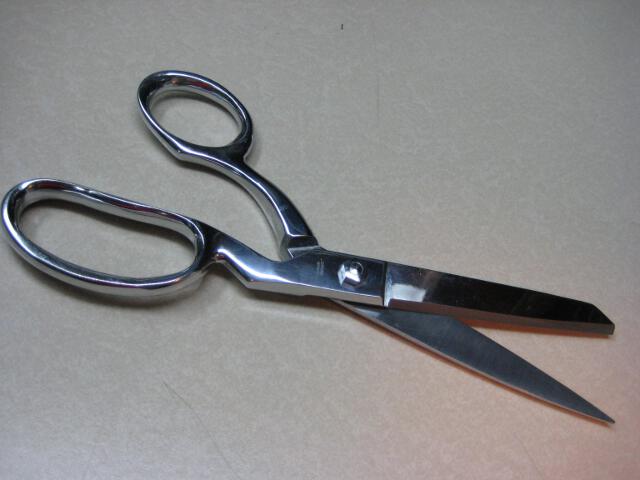
|
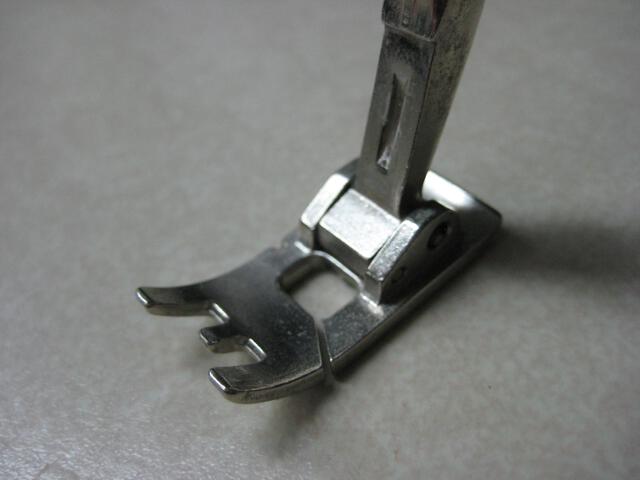
|
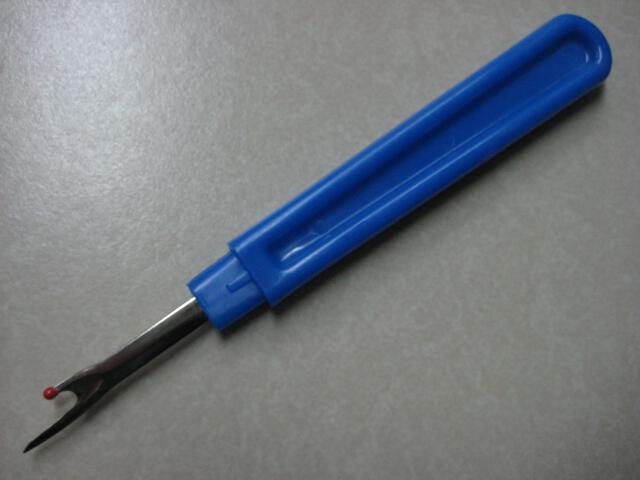
|
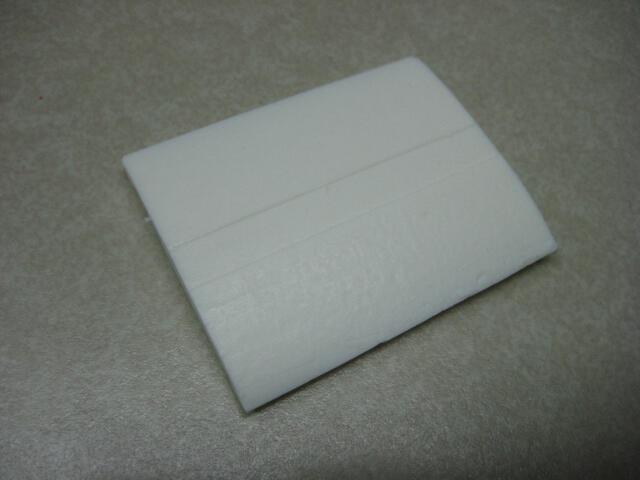
|
|
|
|
|
|
Chart One: Make Openings for Drawstring
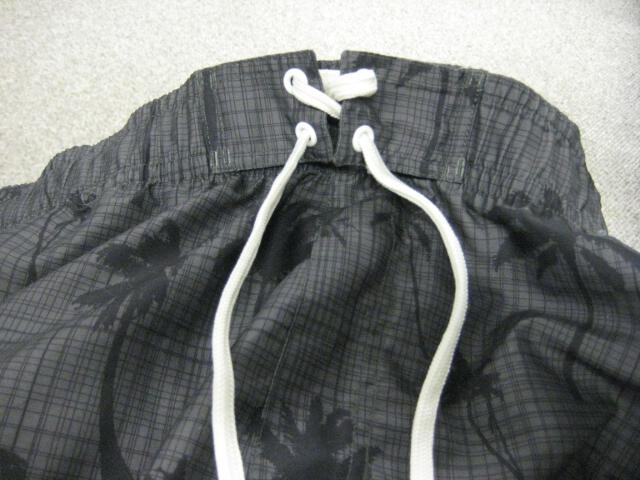
|
Here we have a pair of swim trunks. The tie in the front is a fooler, because it doesn't really pull the waist in at all. It is purely decoration. |
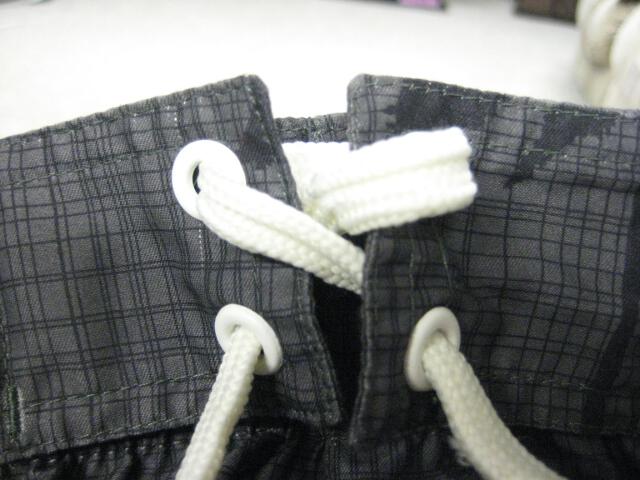
|
Here is a a close up view of that closure. The tie is merely connecting the two flaps. The flaps themselves are also just decoration. |
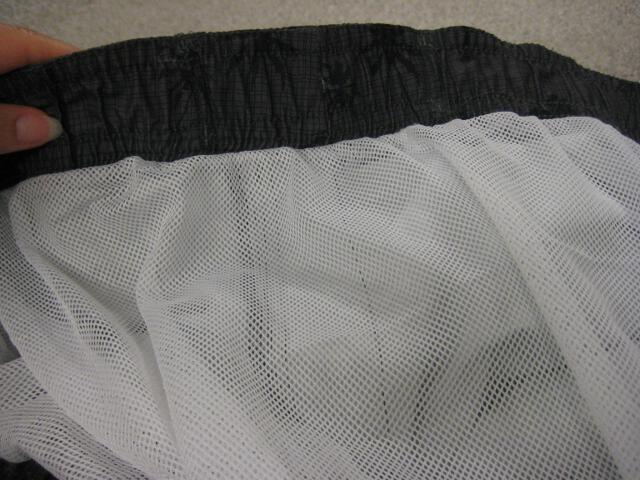
|
|
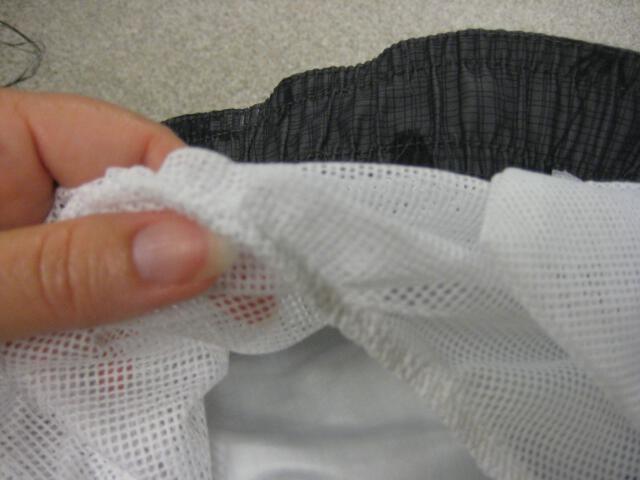
|
|
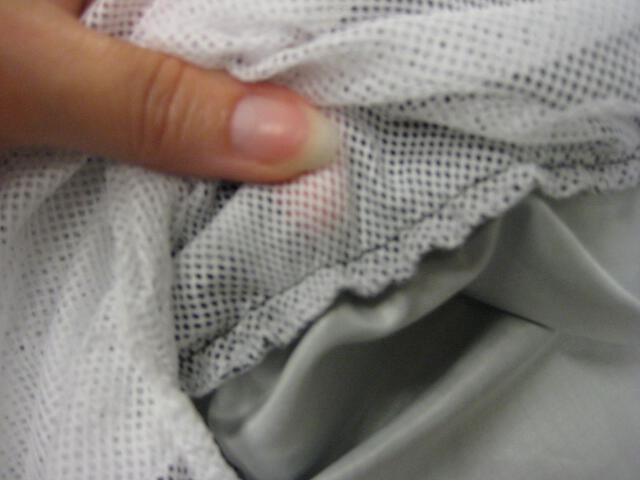
|
This is the seam that needs to be opened. It joins the front of the waistband to the back. It also connects the mesh fabric to the underneath side of the band. |
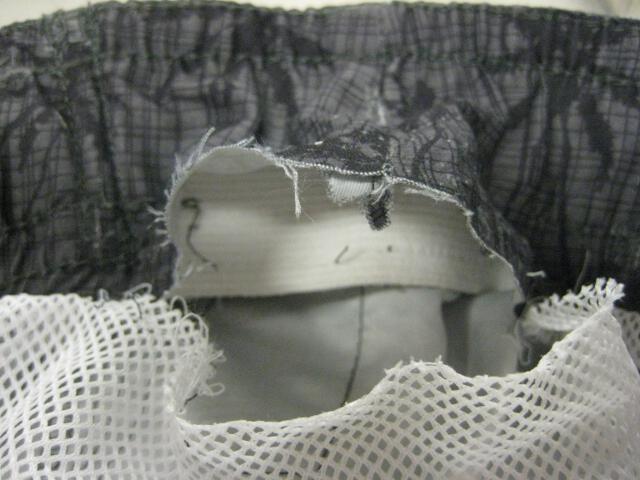
|
Once it has been opened up, the seam looks like this. The mesh has been detached, the elastic is exposed and the front and back of the waistband are separated from each other. |
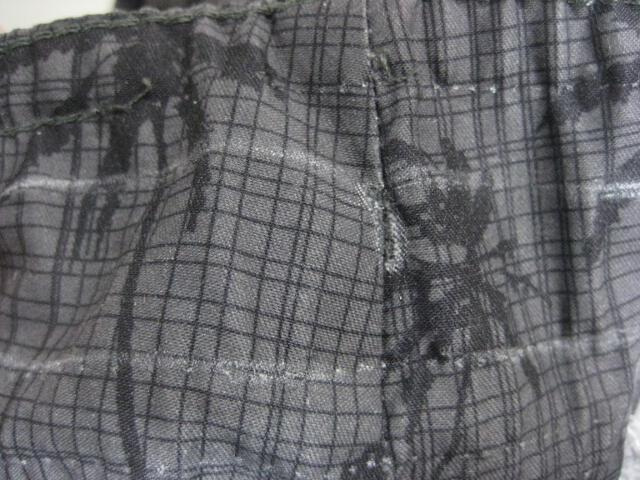
|
|
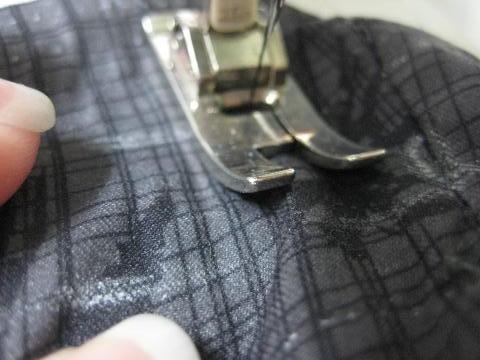
|
|
Chart Two: Insert Drawstring and Finish
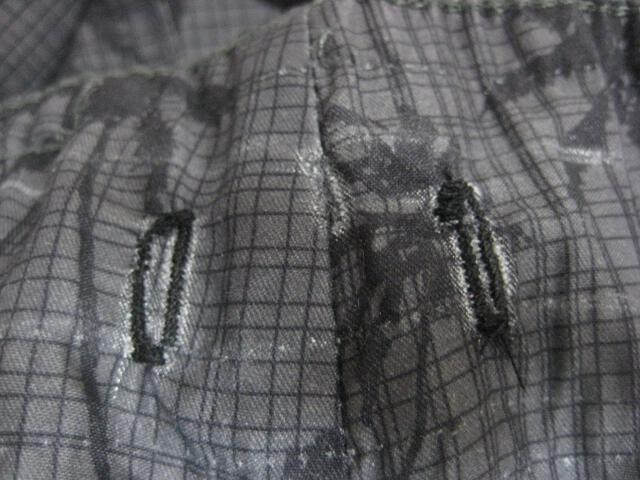
|
|
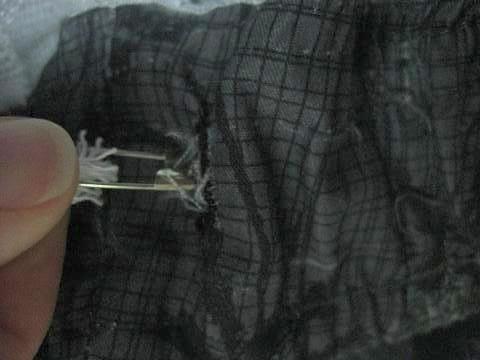
|
|
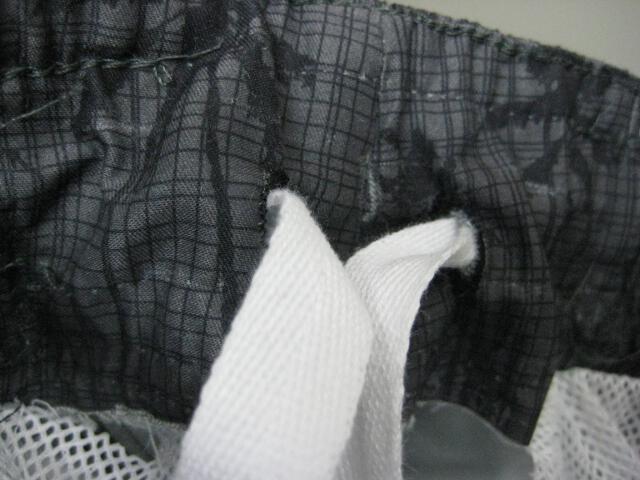
|
Your finished drawstring should look like this. Take a minute to even out the 'tails'. Also, put a knot at both ends. |
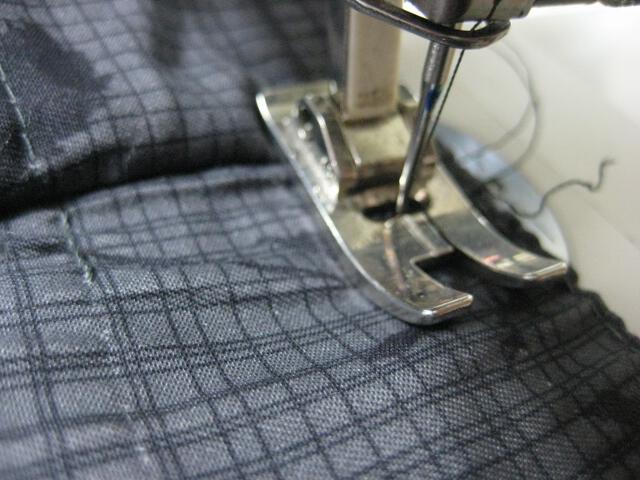
|
|
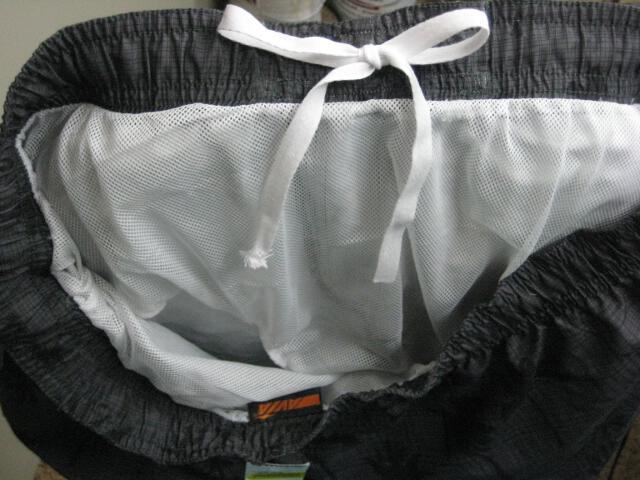
|
|
In Closing...
All body types are different, People who are wider in the hip area may
have a skinny waist. Alterations to the waist are usually straight
forward. This one is more creative.
Make sure your drawstring has
a clear path around the entire waistband. Sometimes the center back
seam is sewn down where the label has been applied. You may need to
remove the label.